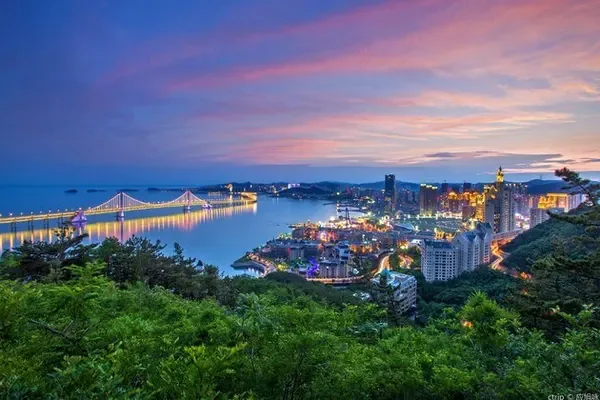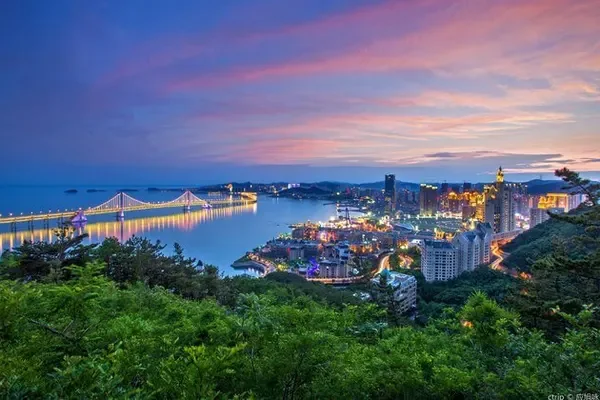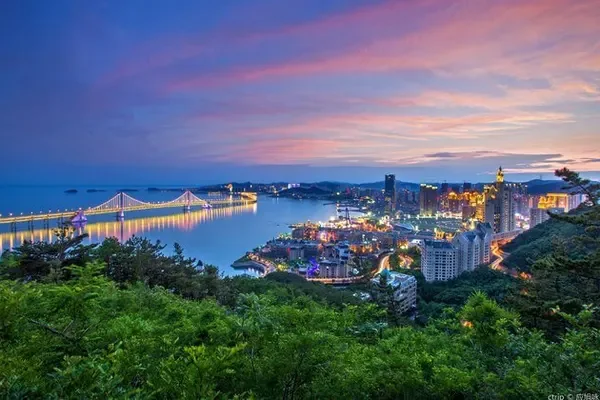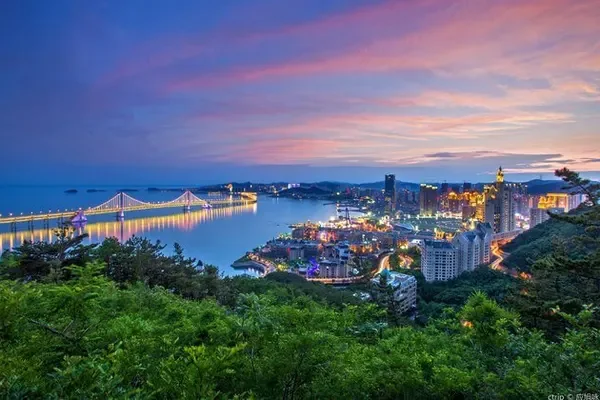Xinjiang self-driving tour diary
In late July, at the beginning of the summer vacation, twelve friends took three cars and started a self-driving trip to Xinjiang. It took 24 days to travel through Jilin, Inner Mongolia, Hebei, Gansu and Xinjiang, with a journey of more than 12,000 kilometers. Along the way, I have experienced stretches of plains with continuous crops; sand dunes with sparse shrubs; lush alpine valleys; Chile River under the shady mountains like a screen; endless grasslands; desolate deserts; barren Gobi; Hills; canyons with abrupt colors and other landform changes. I also browsed the scenery of the city along the way, which is really beautiful. Tasting local delicacies is another important pleasure. Among them, Xinjiang's naan and yogurt are always kept in the car. The naan is delicious, does not need to be heated, and can be stored for a long time. The Xinjiang yogurt is probably because it is authentic, it is very delicious, and it is especially helpful for digestion.
On the 19th, exit the west exit of Changchun Expressway and take the G25 Changshen Expressway. Along the way, you can see plains and fields, with vast expanses of verdant green; rice paddies and villages, shaded by green trees. To Shuangliao, turn to G45 Daguang Expressway, you will see sandy ridges, interlaced hills and valleys; tall trees are sparse, and shrubs are dense. Pass through Tongliao to Chifeng, cross the Horqin Sand Land, the first of the four major sand lands in China, and white sand dunes can be seen under the artificially built oasis. After crossing Chifeng and entering Hebei, you will enter the high mountains and valleys of the Yanshan Mountains. Turn to Chengde and turn to G95-Zhangcheng Expressway, and then it will be late, so I rest in a small town on the side of the road. After asking, I learned that it is Fengshan Town, which belongs to Fengning Manchu Autonomous County. For dinner, fried bowls are served.

On the 20th, continue to take the G95 highway to Huapi Ridge, the entrance of the "Grassland Sky Road" on the east line of the Bashang Grassland, which is known as the No. 1 grassland in northern Beijing. After going out of the Yanshan Mountains, you will arrive at Zhangjiakou City, which is located at the intersection of the Taihang Mountains, Yanshan Mountains and Yinshan Mountains. The mountains are far away, and the plains are vast. Turn to the G6 Beijing-Tibet Expressway, travel in the river landform area under the dam, pass through the ancient Huai'an Great Wall in the remaining veins of the Yin Mountains, and enter Xinghe County in Inner Mongolia from the junction of Shanxi, Inner Mongolia and Hebei provinces. Then go to Ulanqab City, turn to G7 Beijing-Xinjiang Expressway, cross the branch of Yinshan Mountain and arrive at Hohhot City. Further on, there is always the Yinshan mountain range on the right, which is gray and black and quiet like an ink painting. The Tumochuan Plain is vast on the left, colorful and changing like a landscape painting. When there is heavy rain on the road, we stay in Baotou and eat little fat sheep.


On the 21st, start from Baotou and continue along Yinshan Mountain all the way to the west. From the foot of the continuous Yinshan Mountain on the right to the bank of the Yellow River on the left, there is the famous Hetao Plain area, known as the South of the Great Wall. And south of the Yellow River is the Kubuqi Desert, the seventh largest desert in China. Walking to the Urad Front Banner, the Yinshan Mountains suddenly retreated completely to the distant horizon, and the surroundings suddenly opened up, the sky was like a dome, and Lubi stretched straight to the horizon. This is the area where the Yellow River turns north along Helan Mountain and turns east near Yinshan Mountain. The famous Urad Grassland is on the right side, and the flashing blue is probably the famous Wuliangsuhai Lake. Going forward, passing Bayannur City, that is, Linhe City, there is a mountain range far in front of the road, which is Langshan Mountain. The road is close to Langshan and turns south, entering the Ulan Buhe desert, where the undulating dunes intersect with the sparsely grown grassland, and camels appear from time to time. Walking along the mountain to the southernmost tip of Langshan Mountain, from the gap between Langshan Mountain and Helan Mountain, through the low mountain and remnant hilly landform area of Langshan Mountain with strange rocks, the car enters the endless Badain Jaran Desert no man's land, the vast desert There are some remnants scattered among them. At the beginning, there were many uplifts of soil bags beside the road, just like the appearance of mountains born on the ground. The surrounding mountains have completely disappeared, and strong crosswinds often blow the car body. Until approaching Ejina City, there are more and more trees and green grass. A large Populus euphratica forest can be seen close to the Emunagaol River Bridge. Stay overnight in Ejina, taste meat skewers, there are many and crazy mosquitoes.




On the 22nd, after breakfast, visit the urban area of Ejina and Populus euphratica Park, and then continue westward along the G7 expressway. After passing through a section of desert no man's land, enter the dry and denuded mountain landform of Baoer Ula Mountain. After passing through Baipieda, you will enter Gansu Province. After refueling and resting at the Mazong Mountain server in the Gobi, we will enter Xinjiang from the Hansai Mingshui in the North Mountain. This section of the road is the famous Black Gobi hilly land. The surface of the mountain has been eroded in the shape of gravel, and some mountains have been quasi-plain. The rocks and gravel form desert paint under strong sunlight and high temperature, which is called the Black Gobi. It gives people an almost terrifying desolation, and the temperature is also very high. Near Hami, you can see the snow mountains in the distance, which is the first uplifted peak in the Tianshan Mountains. The main peak of Kaerlik Snow Mountain is Tomurti Peak with an altitude of 4888 meters, which is covered with snow all the year round. Follow the Tianshan Mountains on the right side and go to Hami for accommodation, where you can taste some mutton.



On the 23rd, I started to tour Xinjiang. I took the S302 highway and crossed the Balikun Mountain in the eastern section of Tianshan. The vegetation on the mountain is rich and the scenery is pleasant. After going down the mountain, turn to the S303 highway and enter the Balikun Basin surrounded by Tianshan Mountains. The snow-covered mountains surround the wide and flat land far away, with fertile water and grass, and there are many animals. Stay in Mulei for the night, choose a restaurant in an antique street next to the hotel, and taste chickpeas.


On the 24th, start from Mulei and take S303 to S228 to cross the Gurbantunggut Desert in the Jungar Basin, visit the Dinosaur Geopark on the way, and arrive at Fuyun at the foot of the Altai Mountains. The sand dunes along the way are covered with sandy shrubs, and there are often large areas of sunflowers. The evening tour originates from the Irtysh River on the southern slope of the Altai Mountains in the county, and the water is very large. The river is the largest tributary of the Ob River in Russia and the only river in the Arctic Ocean system in my country. For dinner, Fuyun Forty-Nine Meatball Soup.




On the 25th, I bought a Xinjiang Tourist Card with 42 scenic spots at 268 yuan per person, and applied for a border defense certificate. It was midsummer, and there were constant reports of high temperature and scorching heat from our homes in the Northeast. However, when we visited the Altai Mountains, we often had to wear down to keep out the cold. The first is to visit the famous Cocoto Sea Scenic Spot, namely the Irtysh Grand Canyon Scenic Spot, which is located in the Altai Mountains 48 kilometers northeast of Fuyun County, where the source of the Irtysh River is located. A gorge of more than 20 kilometers has strange peaks piercing the sky, strange rocks blocking out the sun, lush forests, clear water and rocks. Youbi leave the scenic spot and take G216 via Beitun, then transfer to S319 to Burqin for accommodation. On the way, camel milk was tasted, and the milk bumps were very sour, and most people were not used to eating and drinking. Cold water fish for dinner.





On the 26th, after breakfast, take the S227 along the Irtysh River for 20 kilometers to the Five Color Beach Scenic Area. The scenic spot is on the side of the Irtysh River, and there are many colorful rocks, with strange shapes and bright colors. The other side is lush and green. Go out of the scenic spot and turn to S232 to Hemu. After arriving at the Hemu parking lot, transfer to a tourist bus, then take the Hemu Village bus, and finally arrive at Hemu, a small village in the valley. Surrounded by glaciers, snow-capped mountains, primeval forests, alpine grasslands and seas of flowers, the village is mostly wooden houses. The whole village seems to be built for tourists to eat, live and play. Horseback riding and mountain viewing are the most attractive projects here. All of us rode to the top of the mountain for a tour. Under the setting sun, the mountains were rolling and the flowers were blooming on the grass. Lunch in the small town on the way to eat a large plate of chicken, dinner roast lamb.






On the 27th, I got up early and climbed to the Harden Viewing Platform to watch the sunrise. There was still snow on the mountain and it was very cold, but there were many tourists. The so-called sunrise is nothing more than waiting for the sun to rise over the mountains in the east. But in the morning light before and after sunrise, the beautiful pictures intertwined with mountains, mist, villages and small rivers are even more unforgettable.
After breakfast, depart for Kanas, take X852 more than 30 kilometers of scenic alpine and canyon roads, pass Hemu Kanas Kuigan, that is, the place where Hemu River and Kanas River meet, and then flow to Burqin after the two rivers meet The name of the section of the river entering Burqin County is Burqin River, which flows into the Irtysh River in Burqin County. If you drive further, you will arrive at Jiadengyu, the gateway of Kanas. Private cars can only be parked in the Jiadengyu parking lot, and you can enter Kanas with a scenic car. There are two accommodations in the scenic area, "New Village" and "Old Village", which can be reached by changing cars at the comprehensive transfer center in the scenic area. Our online pre-booked accommodation is in Xincun.
After lunch, first spend more than 30,000 steps in five hours, and climb to the most famous scenic spot in Kanas, "Guanyutai". The best spot for panoramic views. There is a saying that it is not enough to appreciate the ultimate beauty of Kanas without going to the Guanyutai. We set off from the station at an altitude of 1,400 meters and walked up the hillside path with lush flowers and plants. At first, there were no trees to cover it, and it was very sunny, but the view was excellent, and the distant mountains and wild valleys came into view from time to time. There are wild strawberries in the flowers and plants are very delicious. There are tall trees for shade near the top of the mountain, and there is a winding road to reach the parking lot here. Tourists who do not choose to climb mountains can get here by car. Further up there are 1068 climbing steps, and it is here that you can appreciate the lakes and mountains of Kanas. You can't see the whole picture at the beginning, but you can see that the emerald green lake is as flat as a mirror. The higher you go, the wider the lake is, and you can see the lake meandering away in the valley from the top pavilion, surrounded by mountains, with the reflection of green peaks, mountains and white clouds, and the scenery is infinite. In the evening, eat boiled mutton and drink Wusu wine at the accommodation. The sun had not completely set by ten thirty in the evening.




On the 28th, take a morning tour to the famous three bays in Kanas, namely Shenxian Bay, Moon Bay and Wolong Bay. Sanwan is formed by the Kanas River in the lower reaches of Kanas Lake according to the valley terrain. Firstly, take a car to arrive at Shenxian Bay. Because of the wide water surface, there are often clouds and mist shrouded in the green hills and valleys, and the river island with lush trees is like a fairyland. However, because there was no rain at night, the clouds and mists could not be seen. Continue along the boardwalk and arrive at Moon Bay in a short while. The quiet river twists and turns like a crescent moon, and the flat islands are like footprints. Going forward along the plank road, the river becomes open again, with dense forests on both sides, and an oasis in the river lying on the water like a giant dragon. This is Wolong Bay. After going back to have breakfast, visit Kanas Lake along the lakeside plank road. The river section from the outlet of the south end of Kanas Lake to Yaze Lake is densely covered with boulders, the water is turbulent, and the waves are splashing; , the water flow is slow. After going to bed in the afternoon, swim to the Shouting Spring, the spring water will become louder due to the shouting, and go back and forth for more than ten miles, and walk more than 30,000 steps a day, and continue to stay in Kanas. Pin Borshak.



On the 29th, I left Kanas and drove back to Burqin, then took the G217 National Highway to Karamay. It was already the eleventh day, and everyone was still full of enthusiasm and energy, looking forward to the beautiful scenery and delicious food along the way. When you approach Karamay City, you can see "kowtow machines" everywhere, visit the Karamay River, and stay overnight in Karamay City. Taste horse milk on the way. Unlike camel milk, it contains alcohol, so the driver should not drink too much. For dinner, noodles are served, commonly known as "pull strips".

On the 30th, start to Sailimu Lake, first take the G3104 Kui-A Expressway to Kuitun City, which is Duzi Mountain, and then turn to the G30 Lianhuo Expressway to Sailimu Lake. Sailimu Lake is the mountain lake with the highest altitude and the largest area in Xinjiang. It is the last place where the warm and humid Atlantic air flow favors, so there is a saying of "the last tear of the Atlantic Ocean". It covers an area of about 458 square kilometers and is 2071 meters above sea level. Looking up at the snow-capped mountains, surrounded by mountains, the lake is blue and vast. When you go to the lake, you can see that the lake water is crystal clear and the stones on the shore are not stained with dust. What Hong Liangji said in "Jing Hai Praise" is true. After we drove nearly 100 kilometers around the lake, we chose a place to camp by the lake. Eat pilaf for lunch, cook mutton and drink by yourself for dinner.



On the 31st, take the G30 from Sailimu Lake to Yili through the famous Guozigou Gorge in Tianshan Mountains, and the Guozigou Bridge is very spectacular. After leaving the canyon, you will reach the Ili River Valley in the Tianshan Mountains. First go to the famous Khorgos Port and then arrive at Yining. After crossing the Ili River, turn to G237 and take the famous Yizhao Highway to cross the Tianshan Mountains to Zhaosu. The Yizhao Highway is steep and beautiful, with occasional snow. In the small town of Zhaosu, there are continuous snow-capped mountains and flowers blooming along the roadside. Overnight in Zhaosu, tasting bacon.





On August 1st, after visiting Zhaosu Racecourse and Zhaosu Wetland Park, proceed to Xiata. Along the way, there are patches of yellow rapeseed flowers and perilla seas comparable to lavender, set against the snow-capped mountains, with green mountains, green water, and blue sky Mountains, white clouds, forests, and grasslands constitute the unique natural landscape of Zhaosu. After arriving at Xiata, visit the Xiata Ancient Trail, which is known as the most beautiful hiking route in China. The Xiata Ancient Road, also known as the Xiata Canyon, is a legendary resort. It is the most precipitous and dangerous ancient pass on the ancient Silk Road. Tang Seng crossed the ancient road to learn scriptures from the west, so it is also called Tang Seng Ancient Road. It crosses the Hatamuzdaban at an altitude of 3,600m on the main ridge of the Tianshan Mountains, connecting the north and the south of the Tianshan Mountains, with a total length of 120 kilometers. It is a shortcut from Yili to southern Xinjiang. This abandoned ancient trail has now become a paradise for explorers and hikers. There are many peaks on both sides of the canyon, and the crystal-clear Muzart Ice Peak, which has always been in front of it, seems to be within sight. Flowers are blooming on the lawn by the river. Walk a few miles on the ancient road and return. Overnight stay in Laobingjia Inn, taste the meat. In case of wind and rain, tents are set up indoors.







On the second day, after returning to Zhaosu, take the S220 to the Kalajun Grassland. The grassland is on the rolling mountains, dotted with colorful flowers. Looking far away, there are layers of mountains, surrounded by dark green virgin forests and deep canyons. Stay overnight in Bagua City, namely Turks. The speed limit on urban roads is very low, and the cars on the road are almost crawling. Grilled lamb chops for dinner.


On the third day, start from Turks and go northward to the Ili River Valley, then go eastward on S316 and turn to G218 to the Nalati Grassland at the eastern end of the Ili River Valley in the hinterland of the Tianshan Mountains, also known as the Gongnaisi Grassland. The grassland is located on the northern slope of Nalati Mountain. It is one of the four major grasslands in the world and a subalpine meadow plant area. It is a famous pasture from ancient times to the present. Surrounded by mountains, the broad grasslands with brocades of flowers and scattered patches of lush forests alternate on the undulating hillsides. Here the grass is taller and there are more undulations. It is worthy of being the representative of the most beautiful grassland. Overnight at the Shanyue Inn in Nalati Town, the small yard is very nice, all kinds of vegetables are picked at will, we buy mutton and cook hot pot for drinking.


On the 4th, set off to Bayinbulak Grassland, just as this section of the Duku Highway is blocked, detour from G218. The Mongolian language of Bayinbulak means "abundant spring water". Bayinbulak Grassland is located in a basin among the high mountains of the Tianshan Mountains, surrounded by snow-capped mountains. The grassland is flat and rich in water and grass. , with the beautiful Swan Lake, is a typical grass meadow grassland and one of the most important animal husbandry bases in Xinjiang. In the evening, the black-headed sheep live in Bayinbulak.




On the 5th, take the famous G217 Duku Highway, cross the deep mountain valley, there is the Kuqa River along the way, there are large groups of black-headed sheep grazing on the gentle grassland by the river, there are almost ferocious rocks that change, and there is an emerald at an altitude of more than 2,000 meters. The large and small dragon ponds are as green as green, the Potala Palace surrounded by towering reddish-brown peaks looks like a pilgrimage, and the red mountain stone forest of the mysterious Grand Canyon of the Tianshan Mountains has a magical and spectacular Kizilia landscape. The scenery, the road's reputation is well-deserved. Finally, it passes through Kuqa County to Korla City at the southern foot of the Tianshan Mountains and the northeast edge of the Tarim Basin. At noon, eat jelly and cold noodle in Kuqa, dinner with magenta willow kebabs, and stay in Korla city.








On the 6th, after admiring the beautiful Kongque River in Korla City, drive north over the Kuruktag Mountain and visit Bosten Lake, the source of the Kongque River. Then take the G3012 Tuhe Expressway and go northeast to the Turpan Basin. The water surface of Aiding Lake at the bottom of the basin is 155 meters below sea level, which is the lowest basin in my country. It has a dry and desert climate on the mainland, with long sunshine hours and slow heat dissipation. It is known as the "Fire State" and is very hot. Overnight in Turpan City, tasting smoked horse sausage.


From the seventh to the eleventh, return. Get up early and line up to buy Turpan's famous baked buns, see the city's appearance, and see the Flame Mountain when passing by. On the way, stay in Hami, Ejina, Hohhot, Chengde. The Dazhao Temple in Hohhot is surrounded by many ancient buildings, and the square is crowded with people at night. Chengde went to see the Summer Resort. Arrived home smoothly on the 11th.




